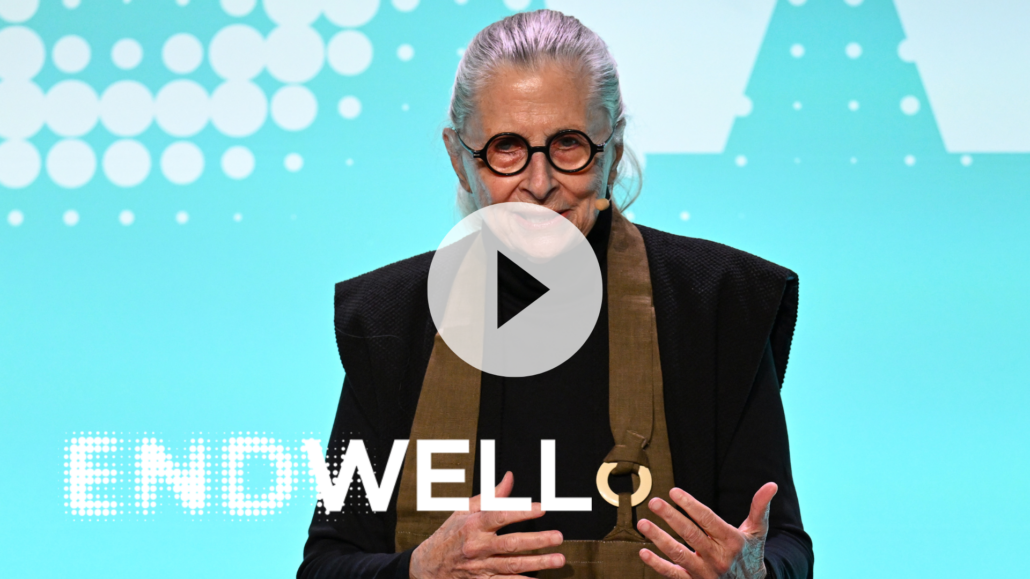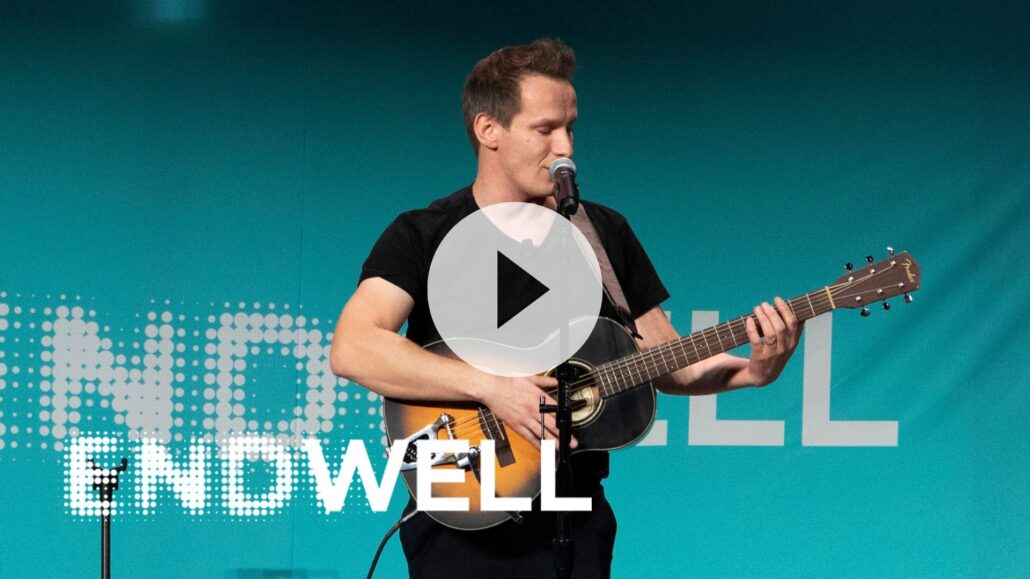Look at these faces. I wrote and produced a series for Netflix about a woman named Amy. In the story, Amy meets an Italian chef, a Sicilian chef, in Florence, and they marry. They move to LA to pursue their dreams: hers in the arts and his in culinary. Then, he’s diagnosed with a rare cancer but he recovers, they adopt a child, and then, several years later, when the cancer comes back, we see Amy lose herself in caregiving. Weeks after her husband has passed, she is so consumed with grief, she can’t get out of bed. She can’t take a shower. Her sister has to tell her to wash her ass. She stinks, literally. Her life, her dreams, are shattered. She’s belly-up on the rocks at low tide. She’s raw. Near the end of the series, we see Amy in Sicily. She’s traveled there to bring her late husband’s ashes to his hometown. Her extended family has gathered, and as she stares out at the sapphire blue Mediterranean, we sense that something new, that she’s on the verge of something new. As the music swells, Amy says, “Thank you, thank you for bringing me here.” She’s saying it to her late husband, but she’s also saying it to herself. It’s beautiful, it’s bittersweet, or as the Sicilians say, it’s agro dolce. Her life, while uncertain, seems full of possibility. It’s a pretty cinematic Hollywood ending, right?
Well, in case you haven’t guessed, you probably read the program. I am the person that the story is inspired by. It’s based on my book about losing my late husband, Saro, in 2012 to leiomyosarcoma. I am the person who lived on after that Hollywood ending. My entire professional life has been as an actor, a writer, and a producer. I have been exploring human narratives in my work, often narratives of possibility. But for myself, for my life, yes, I had learned to move through crippling grief. I had found how to have some joy and bouts of laughter. But I thought happiness… happiness is… I had that. I had that in a great love, love. Happiness is done. A narrative of possibility was harder to write for myself. My life felt dim, narrow, more bitter than sweet.
About six months after Saro passed, my daughter and I were traveling, and we were in Florence, the city where Saro and I met. We were on a gondola, and we met a woman. She’d lost her mother, so she understood our grief. She asked me for my mailing address, and so without thinking twice about it, I just gave her my address. For the next few years, she sent me postcards from her travels, places like Rotterdam and Rakovec, places I had never been. Over several postcards, I began to consider that maybe, maybe life isn’t just one story. Maybe it’s not just the story of what was or what I wished it might have been, but it’s also the story of now.
When Saro was dying, in hospice, I learned that two things can be happening at once. I can be in the room where my husband is actively dying, and there can be music and there can be flowers. The duality, the bitter and the sweet, side by side. And so I try to adopt this philosophy of duality. When my daughter and I would do activities or take a trip as a solo parent, I could feel the joy of the new things we were doing together, while also feeling the pain of the absence of her father. And when I had to do hard things, like refinance a house or move my wedding ring from my left hand to my right hand, I learned to bookend a hard thing with a beautiful thing, like asking a friend to meet me for dinner at an Italian restaurant where we would eat risotto and I would order the best Sicilian wine on the menu.
I adopted that postcard ritual for myself. I sent myself postcards whenever I traveled to any place that was beautiful. I would write a message of hope or inspiration and send it back to myself for the inevitable moment when I was back in LA, at home in my kitchen, and I felt sad and alone. Over many years and many, many postcards, I felt a hint of curiosity. Could I reimagine? I mean, did I have permission to reimagine? What if, what if, what if I let my brokenhearted curiosity lead? Could life be not just dim and narrow, but also have joyous possibility? Could I live in the dangling question that is life after loss, and not run from it but befriend it, embody it? And could I stretch that question big enough to include a life that had joy and even more?
Now, I’m going to keep it real, and I’m going to tell you right now that if anyone had told me in the early stages, even years of my grief, if they had come to me when I was struggling, barely getting by, anxious, and overwhelmed, if they had said I could have a life of possibility and joy and more, I would have said, “F*ck you and the horse you rode in on—no, thank you.” But time, it is a real thing, and love is an equally real and powerful thing. And so, the first thing that we do, the first thing you do, is you just, you get up and you wash your ass. You learn how to navigate and manage this crippling grief. And then you try to learn to hold the duality, the bitter and the sweet. You build up those muscles. And then maybe it’s time to consider writing a new story, one of radical possibility.
But how, right? So, how do you do that? Well, first you start with the past. The word “radical” and the Italian word “radice” both share an etymology. They mean “root.” Our future has roots in the past. So, for me, that meant that I went sifting through the rubble of my past, looking for glimmers of hope and light. For the way forward. I reread journals, I read letters and emails, even texts. I engaged in an act of remembrance, and then I wrote it down. Because our stories matter, and when we write them down, we can mine that writing for gold. And when I say “writing,” it doesn’t have to be your pen to paper or your fingers on the keyboard. You could send yourself a voice memo, you could do a drawing, you could tell your story to a friend. And over the process of doing this, I remembered that I liked art and travel and food. After all, I’d gone to Florence, I’d married and met an Italian chef, and I understood that I had endeavored an improbable dream: to be an actor, to love across cultural and racial lines, to become a mother in the face of cancer. All of those parts were still in me. I didn’t have to let them go. They were rooted in me.
I have come to learn that we can—the future can hold all of it: past, present. We can own all of our timelines as we go forward. We can reclaim, we can reimagine, and adding new possibilities is additive to our lives. It’s not either the past or the future. It’s more than even the duality of things. I’m talking about a multi-pronged approach to time, looking back while simultaneously standing in a now that is embodied with grief, while also allowing glimmers of light to come in to guide the way forward.
When I was co-writing the final scenes for Amy in the series, I had met someone new, but I was not remarried. And then, three years later, my new husband, my daughter, and I traveled to Sicily to be with my late husband’s family, to sit at a table, and to break bread. And when that moment came, when we were all seated at the table, I could see that we all got more because we endeavored this new experience. And I imagine that Saro was there with us, that in our laughter was his light, that this new tableau of family was a physical manifestation of a dream of radical possibility. I mean, we were alchemizing the past in the present while pouring wine and passing pizza. It was beautiful. There was so much love in the room because we endeavored to rewrite what was possible.
I know Saro will always be with me. I know he is never gone for me. I know that when I do new things, I imagine that he is right there with me. And so, I ask myself often, “How can I carry our story forward by living the biggest life I possibly could imagine?” New timelines, new narratives, new possibilities. Because I believe that our very act of living is an act of love for those who have gone.
My favorite writer, James Baldwin, he said, “One discovers light in the darkness, that that is what darkness is for.” But everything in our lives depends on how we bear the light. To know that even in darkness, there is a light somewhere. To know that within oneself, waiting to be found, there is a light. How we bear the light, how we find the light. We will all lose someone. All of us. We will know loss. We will lose a job, our children will leave home, we will lose our youth. We will have to start again, when we cannot imagine starting again. But if we stand at the threshold of life after loss, willing to be open to new possibilities, maybe not on day one, but if we endeavor to do this, whether it’s after a loss like the one I had, or it’s life after 50, or it is life after the end of a devastating breakup, or it is life in a world where everything we thought we knew about compassion and empathy and love and equality is called into question. If we can braid our past and present together as we look for the glimmers of light for the future, if we can live in the dangling question that is life after loss, because it is also the dangling question of possibility, maybe not on day one or year two or maybe year 10, but one day, if we are curious, if we can learn to love the light, the cracks where the light gets in, then we can write a new narrative, one of possibility. Thank you. [Applause] [Music]

